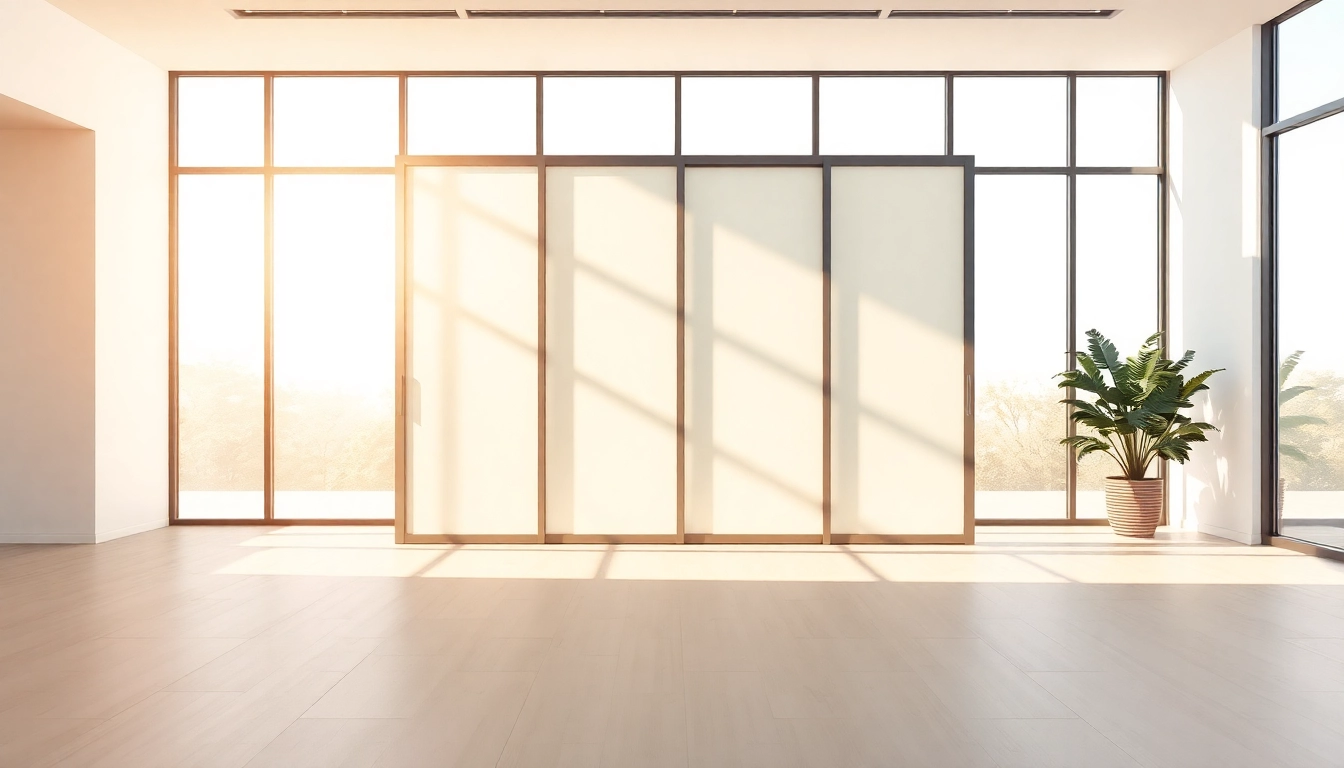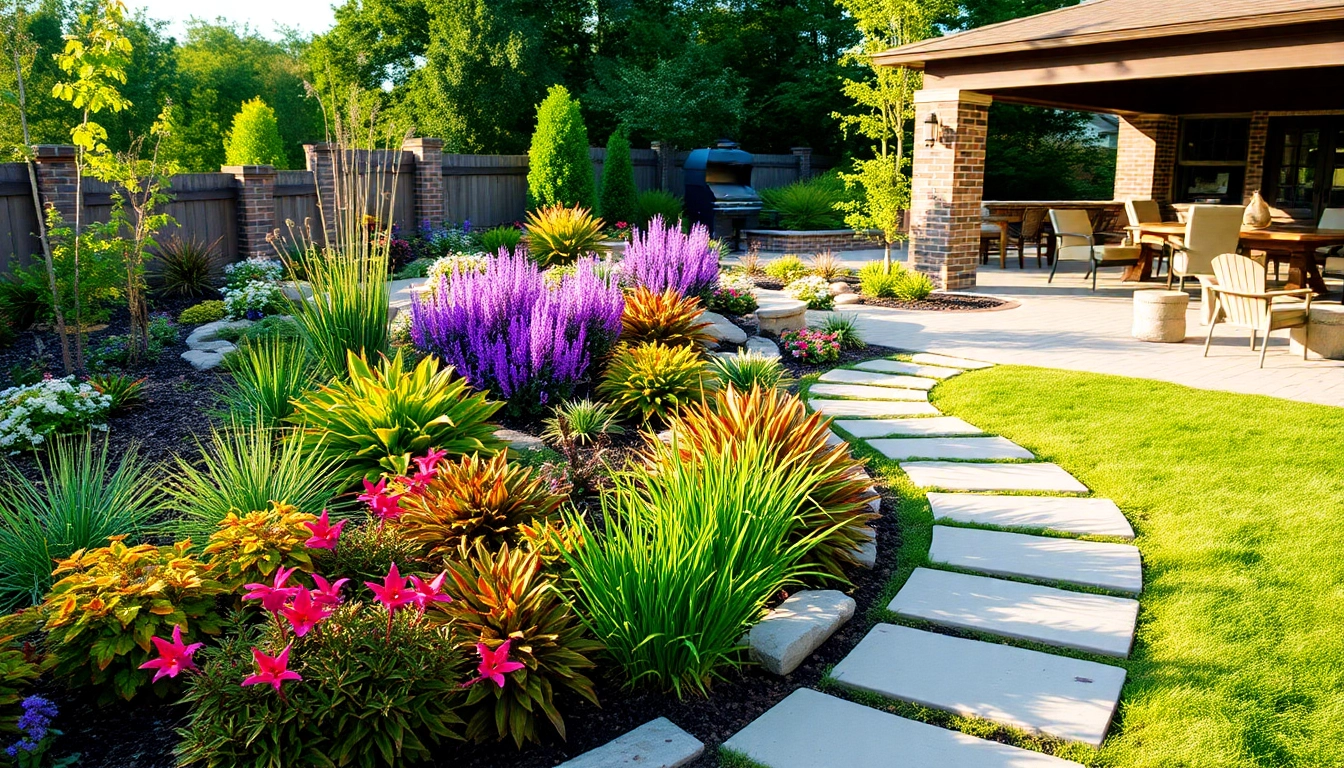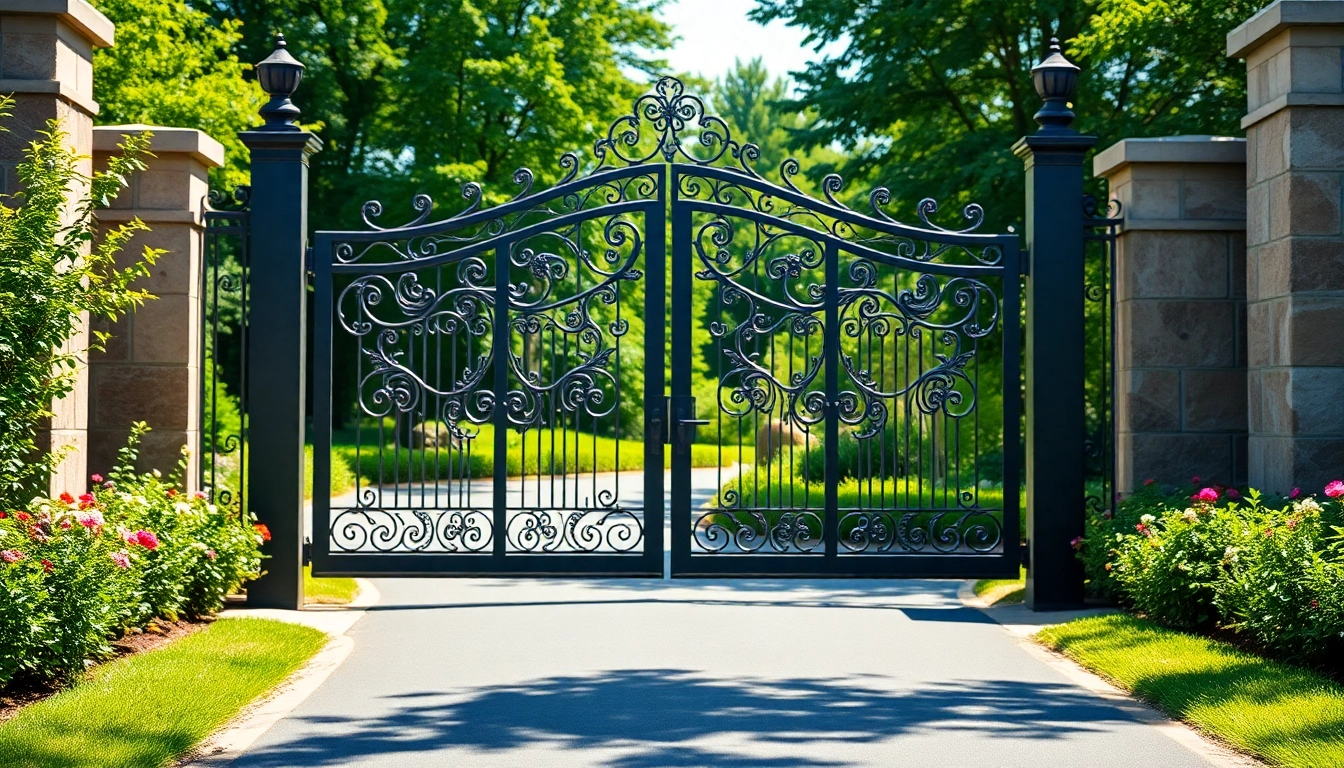Understanding Sliding Partition Walls
What is a Sliding Partition Wall?
A sliding partition wall is an innovative architectural solution designed to create flexible spaces within a room or area. Unlike traditional fixed walls, sliding partition walls are movable, allowing users to easily adjust the layout of their living or working environment according to their specific needs. These walls can be made of various materials, including wood, glass, or fabric, and can serve multiple functions in both residential and commercial settings.
Typically, these partitions are mounted on tracks that enable seamless movement, whether vertically, horizontally, or in other configurations. The ability to slide open or closed allows for adaptive use of space, transforming large areas into more manageable sections — all through a simple design feature. This flexibility is particularly advantageous in homes that require multifunctional rooms or in commercial spaces aimed at maximizing efficiency and adaptability.
Benefits of Sliding Partition Walls for Homes and Offices
Sliding partition walls bring numerous advantages to both residential and commercial spaces. Here are some of the key benefits:
- Space Efficiency: One of the most significant advantages is the efficient use of space. Sliding partition walls can create separate areas without the permanence of traditional walls, offering dynamic room layouts.
- Versatility: These walls can be used to divide large rooms into smaller, more intimate spaces as needed. This adaptability is excellent for multipurpose rooms that serve different functions throughout the day.
- Improved Aesthetics: Available in various designs and finishes, sliding partition walls can enhance a space’s aesthetic appeal. They can serve as stunning focal points that add character to interior decor.
- Enhanced Privacy: For offices and homes alike, these walls provide a level of privacy and acoustic separation, making work environments more productive and living spaces more comfortable.
- Easy Installation: Compared to building permanent walls, installing sliding partition walls is generally less labor-intensive and requires less construction work, making them a cost-effective option.
- Eco-Friendly Options: Many sliding partition walls are now available in sustainable materials, appealing to environmentally conscious consumers.
Different Types of Sliding Partition Walls
There are various types of sliding partition walls designed to meet different needs and styles. Some of the most common options include:
- Glass Partition Walls: Ideal for modern offices, glass sliding partition walls allow light to flow through while maintaining a barrier between spaces. They can create an open feel without sacrificing privacy.
- Wood Sliding Partitions: Wood offers warmth and versatility, and these partitions can be designed to reflect traditional or contemporary aesthetics, suitable for homes or businesses alike.
- Fabric Panels: Often used in conference rooms or theaters, fabric-covered sliding partitions can absorb sound, making spaces quieter while adding a touch of elegance.
- Operable Walls: Designed for heavy-duty use in commercial settings, operable walls are rigid panels that can be opened and closed to create large or small spaces on demand.
- Trackless Sliding Doors: These innovative options can be an excellent solution for environments where floor tracks may be impractical, offering flexibility in how they function.
Choosing the Right Sliding Partition Wall
Factors to Consider Before Purchasing
Choosing the right sliding partition wall requires careful consideration of various factors to ensure it meets your needs and preferences. Key aspects to evaluate include:
- Space Dimensions: Measure the area where the sliding wall will be installed. Knowing the width, height, and any potential obstructions will guide your choice of wall size and style.
- Functionality: Consider how you intend to use the space. Areas needing frequent reconfiguration may benefit from lightweight, easy-to-move solutions, whereas a fixed boundary is better for spaces requiring stable divisions.
- Design Style: Choose a design that complements your existing decor. From sleek modern glass panels to rustic wood finishes, the style of the sliding partition should harmonize with your overall aesthetic.
- Acoustic Performance: If noise control is essential, look for options that enhance sound insulation, particularly in offices or shared living spaces.
- Budget: Determine your budget ahead of time. Sliding partition walls are available across a wide range, and knowing your spending limit will help narrow your options.
Material Options for Durability and Style
The materials used in sliding partition walls can significantly impact their durability and style. Here’s a deeper dive into various materials:
- Wood: Wooden sliding walls are celebrated for their durability and aesthetic appeal. Heavy-duty options made from solid hardwood can last for years while absorbing sound, making them ideal for home and office environments.
- Glass: Tempered glass partitions offer a contemporary touch and allow natural light to fill a space. However, they may require more maintenance to keep clean and may be less soundproof than other materials.
- Aluminum: Lightweight yet robust, aluminum is often paired with glass for commercial applications. Its resistance to corrosion makes it a suitable choice for high-traffic environments.
- Fabric: Fabric panels can be customized in color and texture, offering flexibility in design. They may not be as durable as other materials but provide uniqueness and acoustic advantages.
- Composite Materials: Options made from composite materials can combine aesthetics with durability, offering customized designs while reducing costs.
Installation Requirements and Methods
Installing sliding partition walls can vary depending on the type and complexity of the system. Below are general guidelines for installation methods:
- Preparation: Start by preparing the wall and floor for installation. Ensure that the surfaces are clean, dry, and free from obstructions.
- Mounting Tracks: For most sliding systems, track installation is essential. Ensure the tracks are level and securely mounted to ensure smooth operation.
- Panel Installation: Once the tracks are in place, hang the panels according to the manufacturer’s instructions, making sure they glide effortlessly.
- Finishing Touches: Add any necessary hardware or trim to give your partition a polished look. Double-check all elements to ensure they are secure and functioning properly.
Design Inspirations for Sliding Partition Walls
Creating Functional Spaces with Design
Design plays a crucial role in maximizing the benefits of sliding partition walls. Here are several design inspirations to enhance functionality:
- Multi-functional Living Rooms: Use sliding partition walls to create versatile spaces that can function as both a social hub and a quiet study area. This flexibility is especially beneficial in smaller homes.
- Home Office Divisions: With the rise of remote work, consider sliding partitions to delineate between your home office and personal living spaces, ensuring better focus and productivity.
- Commercial Conference Rooms: In offices, employ sliding walls to create adjustable conference spaces that can accommodate varying group sizes without losing the sense of openness.
Integrating Sliding Walls into Home Decor
When integrating sliding partition walls into your home decor, consider the following strategies:
- Color Coordination: Match the color of your sliding walls with your existing decorative themes to create a cohesive look.
- Artistic Panels: Consider custom-designed panels featuring artistic prints or textures that serve as both a functional wall and a piece of art.
- Incorporating Lighting: Use strategically placed lighting to highlight your sliding walls, creating an eye-catching focal point in the room.
Innovative Uses in Commercial Settings
Sliding partition walls offer innovative solutions for various commercial settings, such as:
- Retail Spaces: Create flexible displays or changing rooms using sliding walls, allowing for easy adjustments to store layouts based on current inventory or promotions.
- Education Facilities: Schools and training centers can use sliding partitions to create adaptable classrooms that can transform for different teaching styles and group sizes.
- Hospitality Venues: Hotels and restaurants can enhance guest experiences by using sliding walls to create intimate private dining areas or adaptable event spaces.
Maintenance and Care for Sliding Partition Walls
Regular Maintenance Practices
- Routine Checks: Periodically inspect the tracks and panels for any signs of wear or damage. Early identification of issues can help avoid more significant problems later.
- Cleaning: Regularly clean the tracks and panels to prevent dust and debris buildup, which can hinder movement.
- Lubrication: Use appropriate lubricants on the tracks to ensure smooth operation, minimizing wear and tear on moving parts.
Cleaning Tips for Longevity
Clean sliding partition walls according to their material to maintain appearance and functionality:
- Glass Walls: Use a glass cleaner or vinegar solution to avoid streaks and keep panels clear.
- Wooden Walls: Dust regularly with a microfiber cloth, and use wood-safe cleaners to maintain luster.
- Fabrics: Vacuum fabric panels with the upholstery attachment to remove dust and consider periodic professional cleaning.
Common Issues and Troubleshooting Steps
Even the best sliding partition walls can face issues. Here are common problems and troubleshooting steps:
- Stuck Panels: If panels are sticking, check for dirt in the tracks or insufficient lubrication. Clean the area and apply lubricant as needed.
- Misalignment: If the wall is not sliding properly, ensure that the tracks are level. Realign any misaligned components carefully.
- Noisy Operation: If the sliding wall is noisy, it could be due to debris in the tracks or lack of lubrication. Clear any obstructions and lubricate the tracks.
Future Trends in Sliding Partition Walls
Design Innovations to Look Out For
As spaces evolve, so do the technologies and design aesthetics of sliding partition walls. Upcoming trends include:
- Biophilic Design: Expect to see more integration of nature-inspired designs using natural materials and patterns that create calming environments.
- Customized Solutions: Brands are leaning toward more customizable options that allow consumers to select dimensions, materials, and appearances to fit their specific needs.
- Integrated Soundproofing: Future designs may incorporate advanced soundproofing technologies within partitions to optimize acoustic performance in noisy environments.
Smart Technology Integration
With the rise of smart home technology, sliding partition walls may soon feature integrated technology such as:
- Smart Glass: This innovative feature can adjust opacity, switching from transparent to opaque at the touch of a button, enhancing privacy and light management.
- Automated Systems: Imagine motorized sliding walls that operate remotely, allowing users to configure spaces without physical labor.
- Integration with Home Networks: Future sliding walls could be connected to home automation systems for intuitive usage, such as adjusting rooms for various activities.
Eco-friendly Materials and Sustainability in Design
Sustainability is a growing priority in architectural design, including sliding partition walls. Expect to see:
- Recycled Materials: Brands are increasingly using recycled materials in wall construction, promoting eco-conscious decisions in both residential and commercial spaces.
- Sustainable Sourcing: Look for manufacturers committed to sustainably sourced woods and low-impact production methods for their partition walls.
- Energy Efficiency: With better insulation and energy efficiency in design, sliding partition walls might help in stabilizing internal climates while minimizing energy loss.



